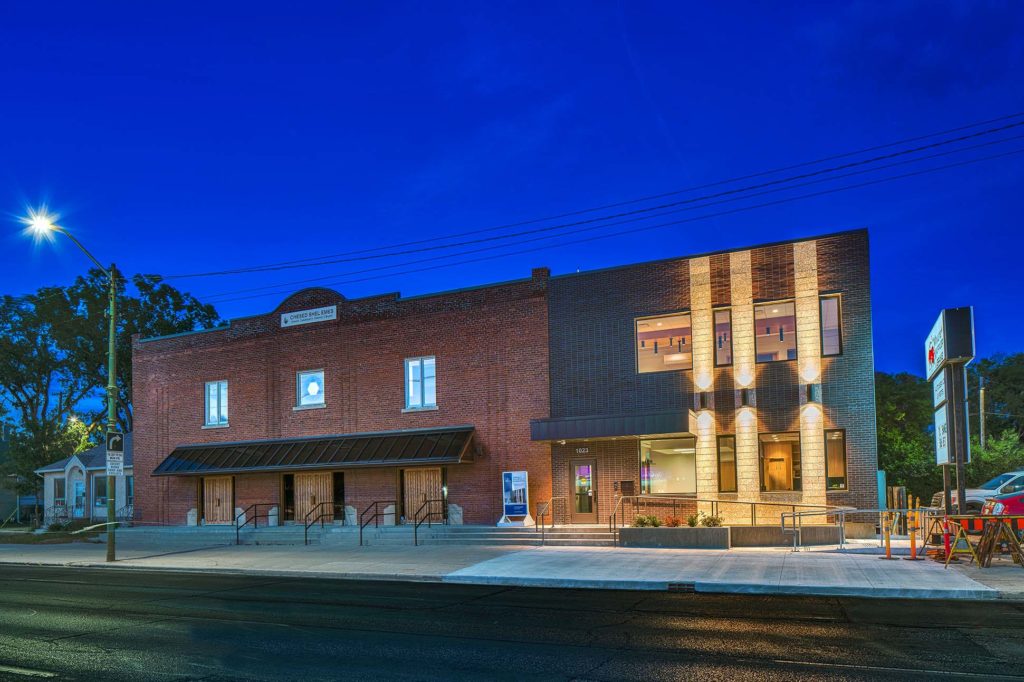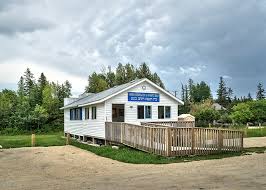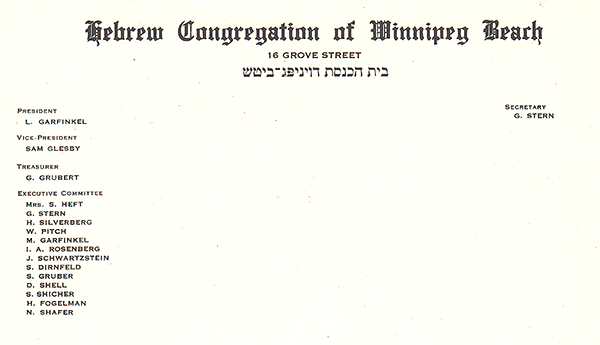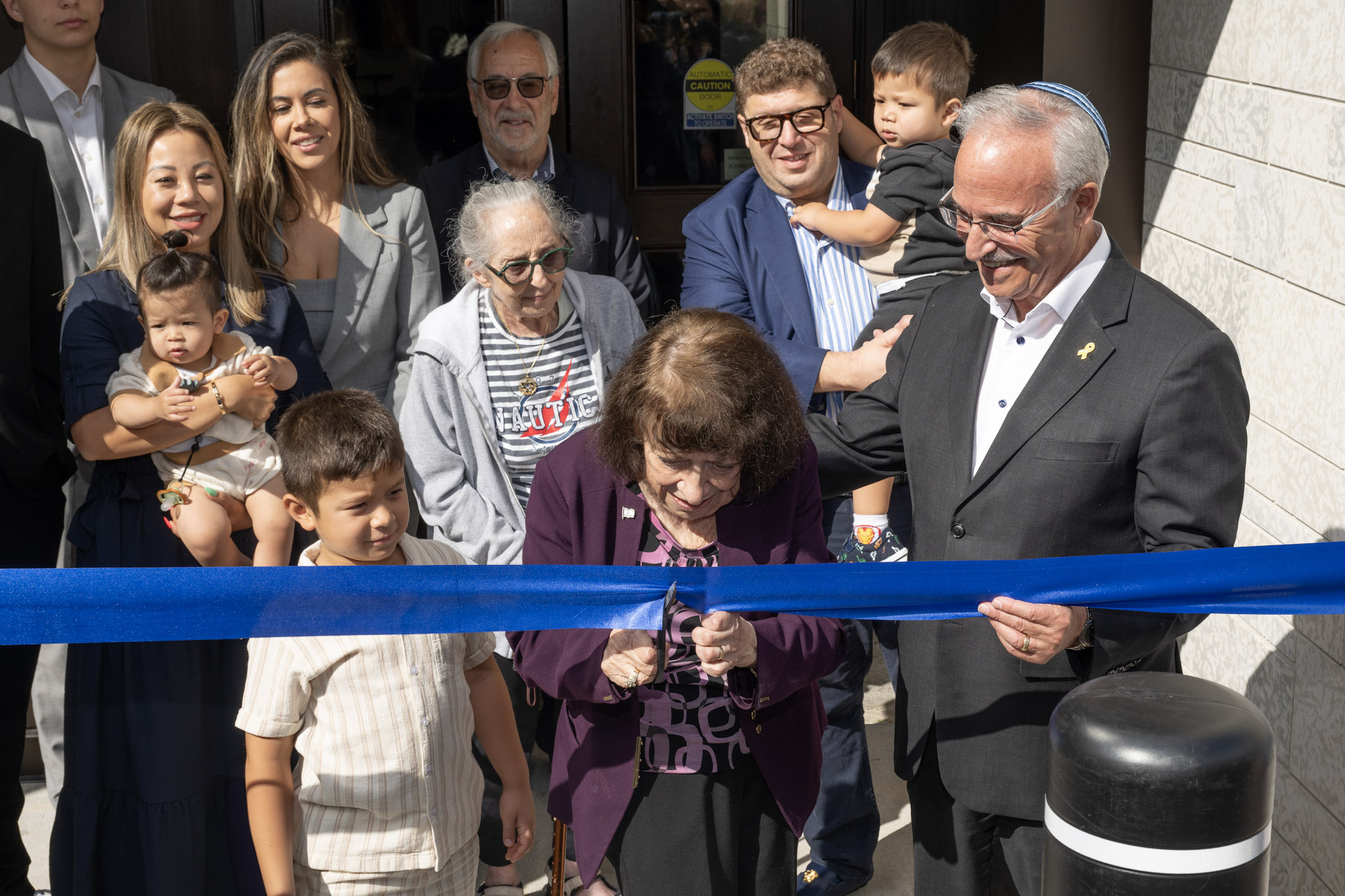Local News
Sandra Novak is latest addition to JCFS staff/JCFS expands counseling program
By MYRON LOVE Sandra Novak is emblematic of the changing demographics of our Jewish community.
The newest addition to the Jewish Child and Family Service counselling staff was born and raised in Buenos Aires. While in school, she was accepted for the NAALE program in Israel – which offers teenagers from other countries a full scholarship to finish their high schooling in the Jewish State.
While studying in Israel, her parents – with her two brothers chose to make aliyah. The family subsequently moved again – this time to Winnipeg – and Sandra followed in 2006 after serving her time in the IDF.
To add to the family smorgasbord, Novak met her husband in Winnipeg, and the couple have one child.
“We appreciate the quieter atmosphere here in Winnipeg,” Novak says. “And people have been really friendly.”
Novak earned a B.A. (2010) – with a double major in psychology and criminal justice – and her M.A. in 2020 in marriage and family therapy. She began working at JCFS in 2016 as a support worker with clients with mental health differences, and then moved to a position as a mental health worker. She was appointed to her current position of Counselling Therapist in October.
The former case worker’s elevation to therapist, JCFS Executive Director Al Benarroch points out, reflects the increased demand for counselling services resulting from the Covid-19 pandemic and social measures that were adopted in response.
“This is the first time in 20 years that we have had such a high demand for a therapist on staff,” Benarroch says. “In the recent past, we had been able to provide the counselling services that our clients required by contracting with therapists in private practice or through our on-staff therapist a couple of days a week. That person (Shelley Levit) retired, and we saw the need to hire Sandra at 4 days per week.”
Novak reports that she is available to work with individuals – both teens and adults – couples and families dealing with issues such as depression, anxiety, addiction, and more – to help them to better function at work, in their relationships and in their personal lives.
“It gives me a lot of satisfaction when I can help my clients overcome their problems and thrive,” she comments.
Benarroch adds, JCFS’s Counselling Services are available both for members of the Jewish and non-Jewish communities.
JCFS expands counselling program
Jewish Child and Family Service (JCFS) is proud to announce our JCFS Counselling Program has expanded. Did you know that we are available five days per week?
The JCFS Counselling Program is available to the community at large, regardless of religious or ethnic background. Fees for counselling services are charged on a sliding scale, based on family size along with income. Our goal is to be accessible and available.
Counselling at JCFS is delivered by highly skilled licensed therapists. The therapists are knowledgeable of a variety of treatment modalities. They can help with life challenges such as emotional stress, anxiety, depression, marital issues, relationship problems, self-esteem building, parenting, coping with life adjustment changes, bereavement, and more. JCFS Ttherapists always utilize a skills-based approach and encourage skill development of all clients. We’re here to help you better handle the challenges life can throw at all of us.
JCFS therapists are available to deliver services either in-person (at our office) or remotely. This hybrid model helps to meet people where they are at and reduces barriers to accessing support.
We’re here to help!
To book an appointment with the JCFS Counselling Program, please apply by contacting JCFS Intake 204-477-7430 or jcfs@jcfswinnipeg.org
Local News
Thank you to the community from the Chesed Shel Emes

We’re delighted to share a major milestone in our Capital Campaign, “Building on our Tradition.” Launched in November 2018, this campaign aimed to replace our outdated facility with a modern space tailored to our unique needs. Our new building is designed with ritual at its core, featuring ample preparation space, Shomer space, and storage, creating a warm and welcoming environment for our community during times of need.
We’re grateful to the nearly 1,000 generous donors who contributed over $4 million towards our new facility. A $750,000 mortgage will be retired in November 2025, completing this monumental project in just seven years.
We’re also thrilled to announce that our Chesed Shel Emes Endowment Fund has grown tenfold, from $15,000 to $150,000, thanks to you, the Jewish Foundation of Manitoba’s FundMatch program, and Million Dollar Match initiative in 2024. Our fund helps ensure that everyone can have a dignified Jewish funeral regardless of financial need.
As we look to the future, our goal remains to ensure the Chevra Kadisha continues to serve our community for generations to come. Our focus now shifts to replenishing our savings account and growing our JFM Endowment fund.
We’re deeply grateful for your support over the past several years.
It’s our privilege to serve our community with care and compassion.
With sincere appreciation,
Campaign cabinet: Hillel Kravetsky, Gerry Pritchard, Stuart Pudavick,
Jack Solomon, and Rena Boroditsky
Murray S. Greenfield, President
Local News
Winnipeg Beach Synagogue about to celebrate 75th anniversary

By BERNIE BELLAN (July 13) In 1950 a group of cottage owners at Winnipeg Beach took it upon themselves to relocate a one-room schoolhouse that was in the Beausejour area to Winnipeg Beach where it became the beach synagogue at the corner of Hazel and Grove.
There it stayed until 1998 when it was moved to its current location at Camp Massad.
On August 2nd members of the synagogue will be holding a 75th anniversary celebration.

As part of the celebration anyone who is a descendant or relative of any of the original members of the first executive committee (as seen in the photo here) is invited to attend the synagogue that morning.
If you are a relative please contact Abe Borzykowski at wpgbeachshule@shaw.ca or aborzykowski@shaw.ca to let Abe know you might be attending or for more information about the 75th anniversary celebration.
We will soon be publishing a story about the history of the beach synagogue, which is something I’ve been writing about for over 25 years.
Local News
Vickar Family cuts ribbon on new Tova Vickar and Family Childcare Centre

By MYRON LOVE In the words of Larry Vickar, the Shaarey Zedek’s successful Dor V’ Dor Campaign “is not only a renewal of the synagogue but truly a renewal movement of Jewish life in our community.”An integral part of that renewal movement was the creation of a daycare centre within the expanded synagogue. On Monday, June 23, Larry and Tova Vickar cut the ribbon, thereby officially opening the Tova Vickar and Family Childcare Centre in the presence of 100 of their family members, friends and other supporters of the project.
The short program preceding the morning ribbon-cutting began with a continental breakfast followed by a welcome by both Fanny Levy, Shaarey Zedek’s Board President, and Executive Director Dr. Rena Secter Elbaze. In Elbaze’s remarks, she noted that Larry and Tova wanted their family (including son Stephen and family, who flew in from Florida) and friends at the event to celebrate the opening of the Tova Vickar and Family Childcare Centre, “not because of the accolades, but because, as Larry put it, he hopes that their investment in the congregation will inspire others to do the same.”
“When Larry and I spoke about what this gift meant to him and the message he wanted people to take away,” she continued, “I couldn’t help but connect it to the teachings of Reb Zalman Schachter-Shalomi whose book – Age-ing to Sage-ing – changes the whole way we look at the concept of ageing and basing it on our ancestral teachings.”
She explained that his concept of “Sage-ing” is based on three key ideas – Discover your meaning and purpose; accept our mortality and think about the legacy you want to leave.
“Larry spoke about these exact concepts when we met,” she said.
Elbaze also noted the presence of Shaarey Zedek’s newly-arrived senior Rabbi Carnie Rose, former Rabbi Alan Green, and area MLAs Mike Moroz and Carla Compton.
Larry Vickar expressed his great appreciation for all those in attendance. “Tova and I are deeply moved to stand here with you today for this important milestone in our community”, he said. “We are grateful to be surrounded by all of you, the people we care about, our family and friends… you who have touched our lives and played some part in our journey.”
